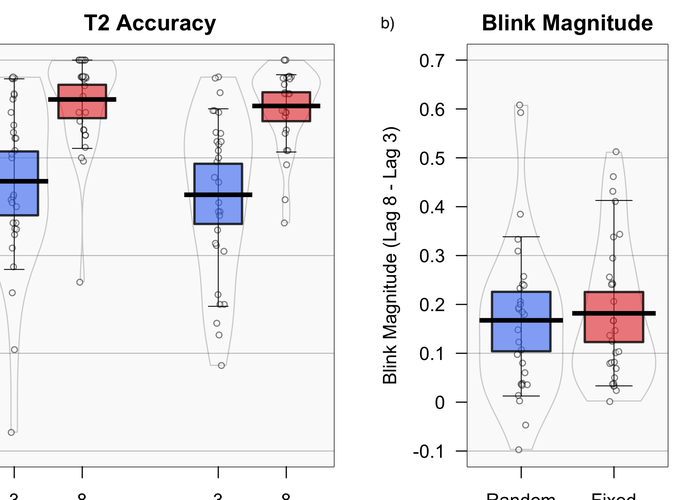Temporal predictability does not impact attentional blink performance: Effects of fixed vs. random inter-trial intervals
Abstract
Background: Does the inclusion of a randomized inter-trial interval (ITI) impact performance on an Attentional Blink (AB) task? The AB phenomenon is often used as a test of transient attention (Dux & Marois, 2009); however, it is unclear whether incorporating aspects of sustained attention, by implementing a randomized ITI, would impact task performance. The current research sought to investigate this, by contrasting a standard version of the AB task with a random ITI version to determine whether performance changed, reflecting a change in difficulty, engagement, or motivation. Method: Thirty university students (21 female; age range 18–57, Mage= 21.5, SD = 7.4) completed both versions of the task, in counterbalanced order. Results: No significant difference in performance was found between the standard AB task and the AB task with the random ITI. Bayesian analyses suggested moderate evidence for the null. Conclusion: Temporal unpredictability did not appear to impact task performance. This suggests that the standard AB task has cognitive properties with regards to task difficulty, engagement, and motivation, that are inherently similar to tasks that employ a randomized ITI to measure sustained attention (e.g., the Psychomotor Vigilance Task; PVT; Dinges & Powell, 1985). This finding provides important support for future research which may seek to obtain a more detailed understanding of attention through the comparison of performance on transient and sustained attention tasks.
